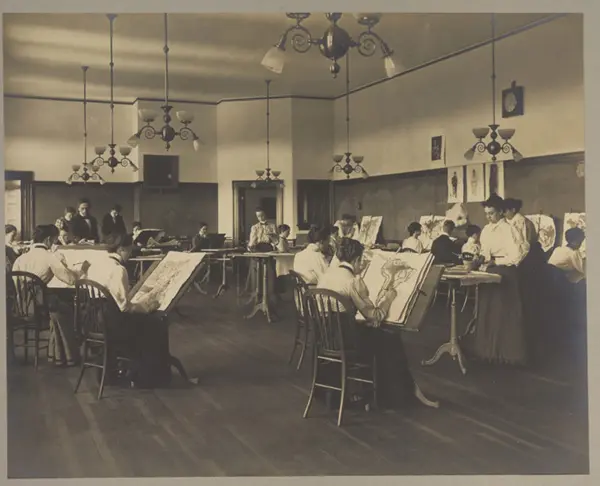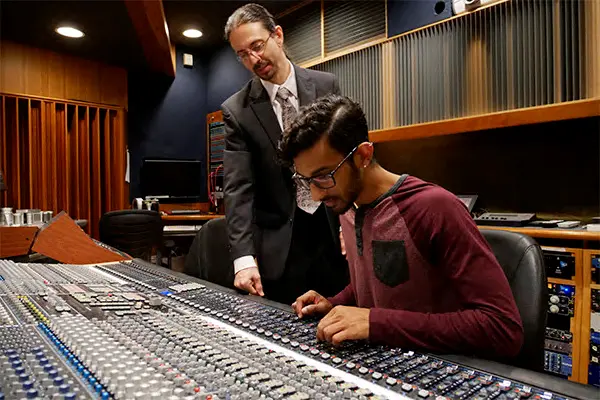
The College of Fine Arts, Humanities and Social Sciences emerged from the growth of Lowell State Teachers College, which offered only a bachelor’s degree in elementary education. As the teachers college grew during the post-World War II boom in higher education, it expanded its departments of music, history, English, math, art and sciences to support the training of teachers in those subject areas.
Alongside the other Massachusetts teachers colleges, Lowell State successfully petitioned the Legislature to become a full liberal arts college in 1960. The Music Department was the first to offer a separate bachelor’s degree in music education, followed five years later by a degree in music performance.
While all of the departments initially offered education degrees with a specialty in a particular discipline – secondary-school English education, for example – they grew rapidly during the 1960s and ’70s and began offering non-teaching degrees in the humanities, arts, sciences, behavioral sciences and nursing. The expansion was accompanied by a building boom, culminating with the dedication of Durgin Hall (now the Moloney Performing Arts Center) in 1976.

The completion of the buildings on what is now South Campus coincided with the merger of Lowell State and Lowell Tech into the University of Lowell in 1975. The departments and degree programs there became the separate colleges of Liberal Arts and Sciences, Music, Education and Health Professions. As ULowell became part of the University of Massachusetts system in 1991, the College of Music became the College of Fine Arts with the addition of the Art Department. Several years later, it merged into the College of Liberal Arts and Sciences.
In late 2009, the college, which already had two divisions, formally split into the College of Sciences and the College of Fine Arts, Humanities and Social Sciences. The latter is now the largest college on campus, with 11 departments offering degrees in more than 20 majors and areas of major concentration, from political science to animation and interactive media, as well as the Bachelor of Liberal Arts degree, which allows students to customize their studies with concentrations in two or more areas.
 Image by Greg Mahan '18
Image by Greg Mahan '18
The college also contributes to the academic development of every student on campus through the First-year Writing Program, ethics classes for engineering students, economics classes for business majors and more: the perspective provided by history; the creativity of art, music and theater; the communication skills gained through study of other languages and cultures; and the understanding of individuals and institutions through the social sciences.
Under the leadership of Dean Luis Falcón, the college’s graduate programs are also growing, with master’s degrees in nine areas, including autism studies, security studies, public administration and peace and conflict studies. The past decade has seen the addition of three Ph.D.s as well, in criminology, global studies and applied psychology and prevention science – all of which contribute to UMass Lowell’s ranking as one of the fastest growing doctoral institutions in the country.
